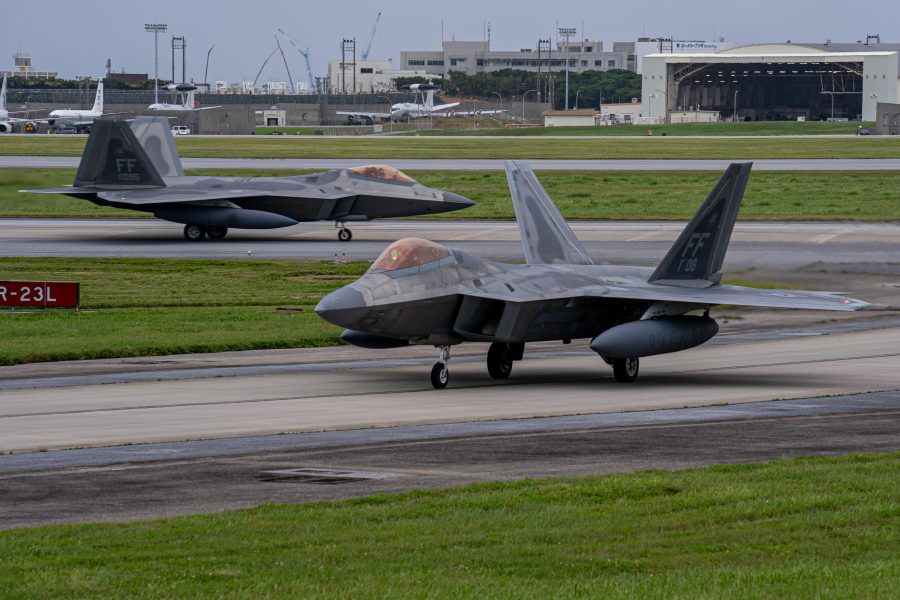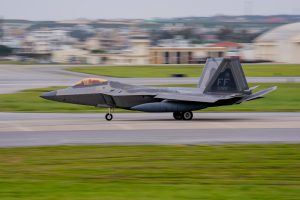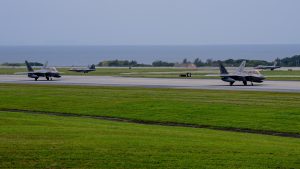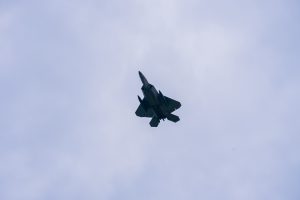F-22A Raptors from the 27th Fighter Squadron at Joint Base Langley-Eustis, Va., recently arrived at Kadena Air Base in Japan, bolstering the fifth-generation airpower at the closest U.S. military installation to Taiwan.
“Amid an increasingly challenging strategic environment, it is vital that we continue to retain modern capabilities to ensure peace and stability across the Indo-Pacific region,” a base spokesperson told Air & Space Forces Magazine on May 1.
For a year and a half now, the Air Force has rotated fighters through Kadena to replace and supplement the base’s aging fleet of 48 F-15C/D fighters, which are slated to return to the U.S.
The latest F-22s join other Raptors from Joint Base Pearl Harbor-Hickam, Hawaii, that arrived in March. Kadena is also currently hosting F-16s from the South Dakota Air National Guard’s 114th Fighter Wing and from the Minnesota Air National Guard’s 148th Fighter Wing.
The spokesperson added that the F-16s are being maintained and operated by Guardsmen, including at least some from the 114th Fighter Wing. They did not say if any personnel from the 148th Fighter Wing are at Kadena as well.
There are still original F-15s remaining at Kadena scheduled to retrograde to the U.S., the spokesperson added. They declined to offer details on how many Eagles are left or the planned timeline due to operational security.
Located just 400 miles from Taiwan, Kadena is a key strategic location and can swiftly deploy fighters for Pacific Air Forces exercises. F-15s have been at the base, on the island of Okinawa, since the 1980s. Since the Air Force announced its plans to withdraw them in October 2022, the service has kept a steady-state fighter presence by rotating all variations of Air Force fighters except for the A-10 Thunderbolt II.
In the latest exchange, F-15s from the California and Louisiana Air National Guards that deployed to Kadena in October are departing the location, as are F-35s from Hill Air Force Base, Utah, that arrived in November.
The newly arrived jets “will work in conjunction with additional heavy and reconnaissance assets that are both augmented to and stationed at Kadena to support the defense of Japan and maintain regional stability,” the spokesperson added. While they declined to specify the exact number of aircraft currently stationed at the base, recent photos of an elephant walk at the base show a diverse array of types, including tankers, UAVs, reconnaissance aircraft, and some two dozen combined fighters.
The U.S. has been expanding its deterrence efforts with Japan against China’s growing military expansion and increasing hostile activities in the region. In the last month alone, the USAF conducted two separate exercises with Japan and regional allies.
President Joe Biden hosted Japanese Prime Minister Fumio Kishida at the White House in April, followed by a “first of many” trilateral summits with Philippine President Ferdinand Marcos Jr. the next day. The leaders expressed concerns over China’s “dangerous and aggressive” behavior in the South China Sea in a joint statement.



